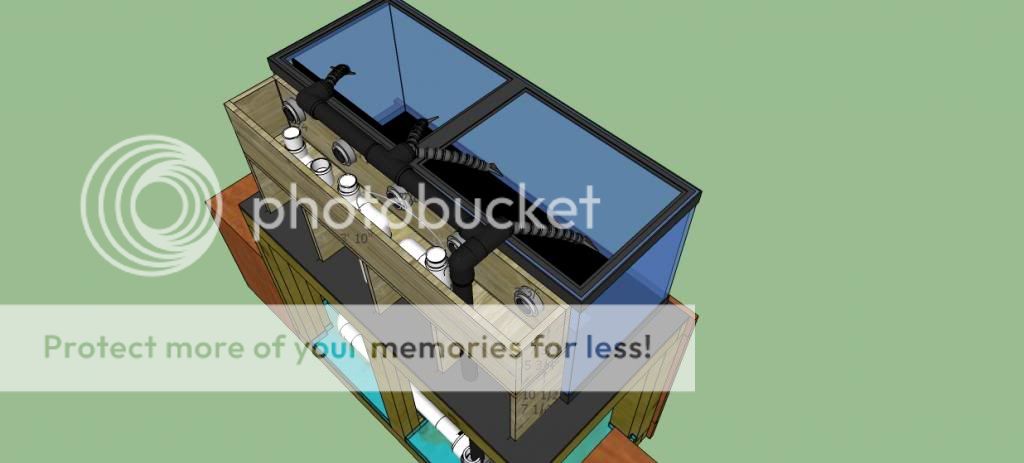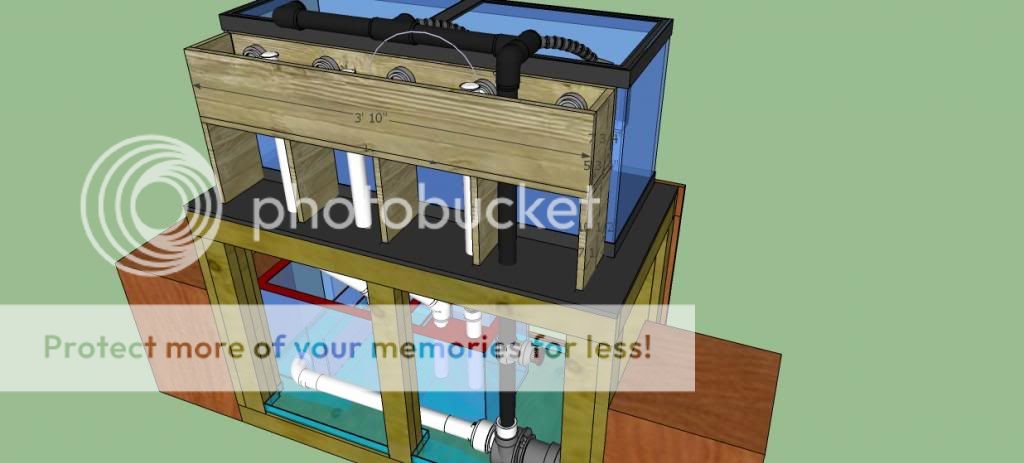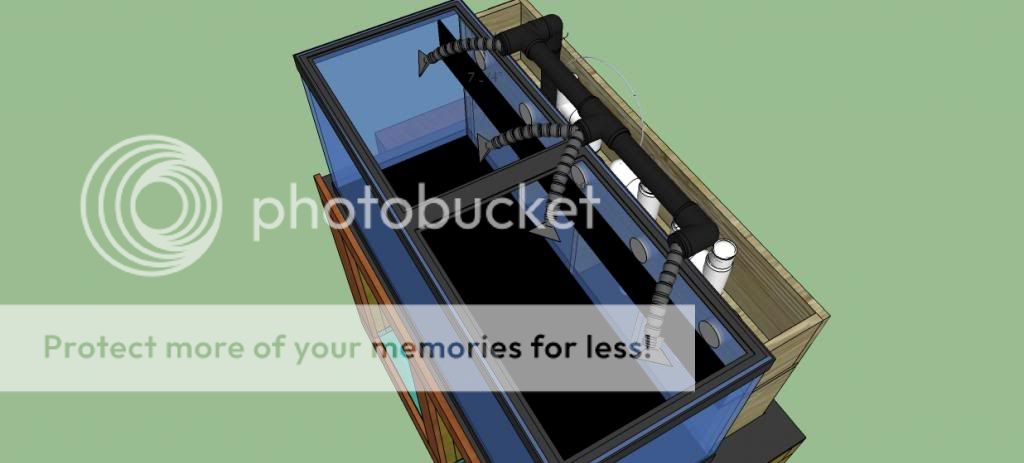SkyReef
New member
What if it was made like a glass holes overflow box that sat on the outside? A bulkhead would pass through the glass and through the wood wall with gaskets between the glass/wood and in the inside of the tank. That would hold the box on the tank without needing silicone. I would do it with multiple holes (like 3) and have elbows on the inside of the tank. You would still need to make a wood box with 4 walls and a bottom and epoxy the entire thing well enough that it didn't leak.
Thanks for your response, UserName. Yes, you are describing my setup, to some degree. My setup is a 75-gallon tank, with an internal, coast-to-coast/Calfo overflow box that is not very deep from front to back. The internal overflow box is made of glass, is already installed. It was much easier to make than an external overflow box made of glass because the internal box has only two pieces of glass, but the external box has four pieces of glass. The system utilizes a BeanAnimal overflow system, plumbed to an external overflow box. Thus, as you describe, 5 bulkheads pass water through 5 holes drilled in the back wall of the aquarium. The water is channeled into an external oveflow box, which has 3 PVC-elbow drain lines, giving effect to the BeanAnimal system. Here, you are saying to use gaskets on both sides of the bulkhead: (1) at the flange side, in the internal box, where the flange of the bulkhead lodges against the inside of the back, aquarium-glass wall; and (2) at the nut side, in the external box, at the inside of the bulkhead lock nut. You are saying to epoxy the whole box, to ensure against leakage. Yes, this is the plan, right now. I'm just hoping that attachment of the overflow box by resort to the 5 bulkheads screwed into place will be sufficient to support the weight of the external overflow box. Thanks.
The gasket is only a measure for just in case your water level inside your box reaches back to the bulkhead. If you use rubber gaskets, they won't affect the nut or the threads on the bulkhead. You can use a gasket on both sides of the box, but depending on the thickness of your glass, gaskets, and wood for the box, you may run out of thread on your bulkheads.
Thanks, Cymonous. So you're saying that installing a second rubber gasket at the nut end of the bulkhead, in the external box (in addition to the one installed at the flange side of the bulkhead in the internal overflow box) would ordinarily not be needed. However, you say, in case the water level of the external box rises to the height of the bulkhead, the rubber gasket there would prevent any backflow out of the wooden box, to the seam separating the tank and the box, causing leakage. That sounds like a good suggestion. You're saying that to use a gasket there, as a second bulkhead gasket, will not cause any harm. Thanks.
I still think you are better off working with acrylic, it may cost you more up front but will last longer, it will be easier to glue, and look cleaner. You can also make it with four walls and glue with silicone one whole side to the tank. The one I showed you worked with a U pipe to transfer the water to the outside. But drilling the tank is better, no problems with air getting in there. Why does it need to be so big? Four feet long seens pretty big.
Thanks, Lazhar. I'm not concerned with how it looks because it will be behind the tank, covered in a hutch, and no one will possibly see the box. I am not convinced that acrylic would be easier to glue than wood, which is super easy to glue. Acrylic is costly, and wood is cheap. However, it would be easier to work with acrylic, from the perspective that the wood will require several coats of epoxy paint, whereas acrylic will not. However, I like working with wood, and I like the idea of using wood because it is ubiquitous and cheap. Acrylic must be in the proper thickness, which is costly and less available. Why do you say that acrylic will last longer than wood? You might be right. Does the epoxy on the wood wear out? I'm not sure. Also, it may be that the wood is stronger than the acrylic, because I can use thicker planks of wood--say 3/4" thick-- than I could readily obtain at reasonable cost in acrylic. Yet, if wood doesn't work out, then maybe your acrylic idea would be the other way to go. Thanks.
You can also use silicone on the treads, it will make it permanent but it will hold the water.
Thanks, Lazhar. Are you saying to screw up the bulkhead nut and then silicone the threads to seal it, or to add strenghth? I'm not clear here. Thanks.
If you are going to put anything on threads, you should use plumber's tape. It is meant to seal threads and does not make it permanent.
Thanks, Cymonous. Actually, if I were to put anything on the threads, it would be plumbers grease, rather than plumber's tape. It seems like a better way to go, for water-sealing purposes. I've used plumber's grease before, and it has caused fewer problems for me than when using plumber's tape. Thanks.
GENERAL QUESTION, EVERYONE: should I use plywood, given its superiority of strength over a plank of pine or oak? Wood experts, what do you think? Thanks, everyone, for their advice and observations.
Last edited:




